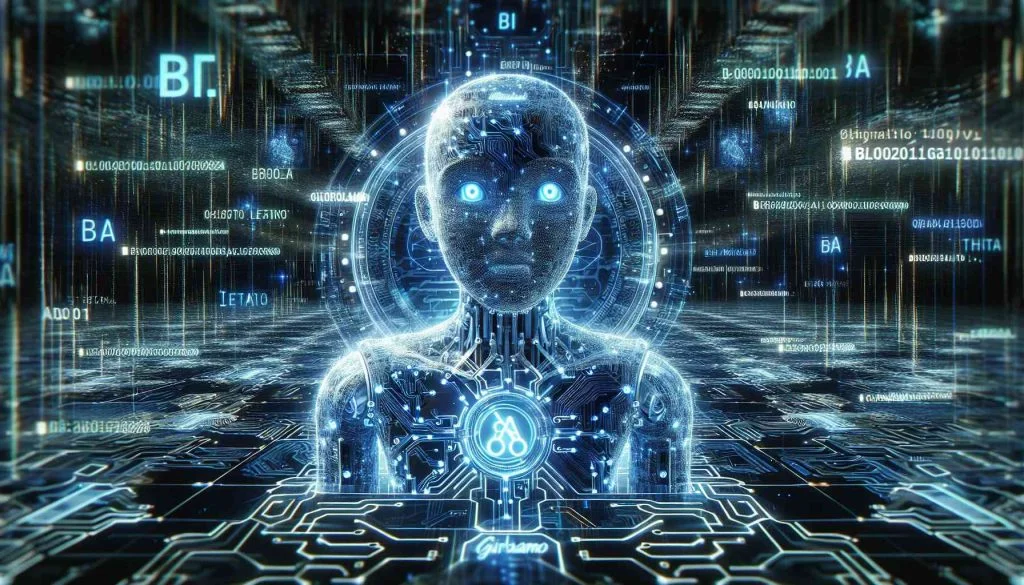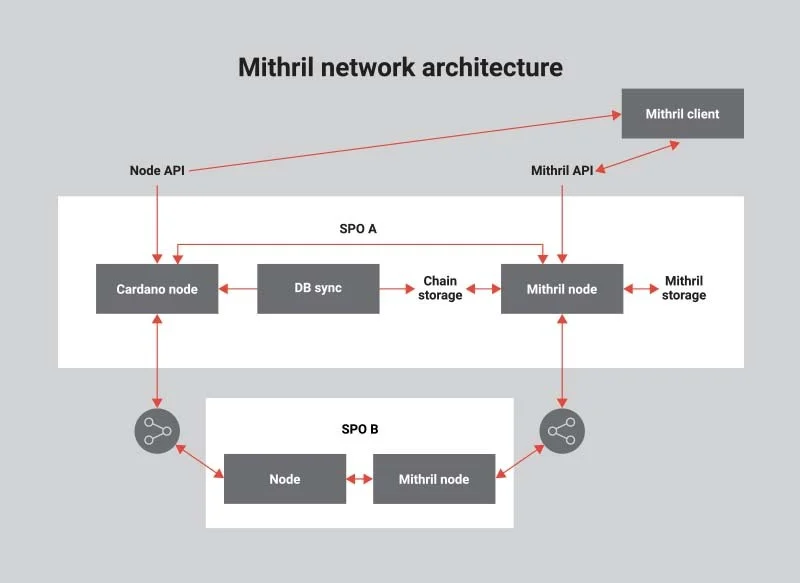Cardano (ADA) has launched Girolamo, an AI chatbot that can handle a wide range of queries and generate images. This is a pivotal step for Cardano in AI, which aligns with its blockchain partner, SingularityNET, and its potential collaboration with OpenAI.

Cardano has made significant progress integrating artificial intelligence (AI) with its ecosystem. The recent launch of Girolamo, an internet-enabled generative chatbot, is a milestone in Cardano’s AI journey.
This development is part of Cardano’s ongoing efforts to combine blockchain technology and AI, showcasing a blend of innovation and practical application.
Girolamo, named after the renowned Italian mathematician Girolamo Cardano, is a chatbot that can handle a broad spectrum of queries, from industry-specific to general everyday questions.
Remarkably, Girolamo also boasts the capability to generate and interpret images, adding a visual dimension to its functionality.
The chatbot is powered by a generative neural network, which can produce novel and diverse outputs based on the input data. Girolamo can also learn from the feedback and interactions of the users, improving its performance and accuracy over time.
It is accessible through a web interface, where users can type or speak their queries and receive text or image responses.
Girolamo is a beta version of the chatbot, which means that it is still undergoing testing and development. The chatbot is expected to improve its features and functionality in the future, such as adding more languages, domains, and modes of communication.
The development demonstrates Cardano’s vision and ambition in AI, which aims to create a more intelligent and interactive blockchain ecosystem.
SingularityNET: A blockchain partner for AI
Cardano’s engagement with AI technology traces back to 2021, with the unveiling of Grace, an AI robot developed by Awakening Health.
This venture was a collaboration between Hanson Robotics and SingularityNET, a blockchain platform that enables the creation and exchange of AI services.
SingularityNET is a partner of Cardano, and the two platforms share a common goal of advancing the convergence of blockchain and AI.
SingularityNET and Cardano have been working together to migrate SingularityNET’s native token, AGIX, from Ethereum to Cardano. This migration will enable faster, cheaper, and more scalable transactions for the AI network, as well as more advanced features, such as smart contracts and governance.
The migration process has been facilitated by the launch of the AGIX converter bridge in the past year, which allows users to swap their tokens between the two blockchains.
SingularityNET and Cardano have also been collaborating on various projects and initiatives, such as the development of decentralized AI marketplaces, the integration of AI with DeFi, and the promotion of ethical and beneficial AI.
SingularityNET and Cardano have a strong synergy and complementarity, as they both leverage the power of blockchain and AI to create a more decentralized, democratic, and innovative world.
OpenAI: A possible partner chain for Cardano
Cardano is interested not only in partnering with existing blockchain platforms but also in exploring new possibilities and opportunities for collaboration.
One of the potential partners that Cardano has expressed interest in is OpenAI, a research organization that aims to create and ensure the safe and beneficial use of artificial general intelligence (AGI), which is AI that can perform any intellectual task that humans can.
Charles Hoskinson, the founder of Cardano, reached out to Sam Altman, the CEO of OpenAI, proposing a collaboration. This gesture reflects Cardano’s aspiration to expand its blockchain ecosystem, potentially exploring a partner chain with OpenAI.
A partner chain is a blockchain that operates in parallel with Cardano, sharing its security and interoperability but having its own unique features and functions.
A possible partner chain with OpenAI could enable Cardano to access and leverage the cutting-edge AI research and development that OpenAI is conducting, such as GPT-3, DALL-E, and Codex.
These are AI models that can generate natural language, images, and code, respectively, based on user inputs. Such a collaboration could also benefit OpenAI, as it could use Cardano’s blockchain infrastructure and community to scale and distribute its AI services and products.
A new protocol for lightweight clients
In parallel with its AI endeavors, Cardano has also been advancing in its blockchain technology, especially with the introduction of Mithril, a new protocol for lightweight clients.
Mithril is a protocol that allows users to interact securely and efficiently with the Cardano network without having to download the entire blockchain history, which can be cumbersome and resource-intensive.
The protocol is based on verifiable random functions (VRFs), which are cryptographic functions that can generate random and unpredictable outputs that anyone can verify.
It uses VRFs to create snapshots of the blockchain state at regular intervals, which lightweight clients can use to verify transactions and balances. Mithril also uses VRFs to select a subset of nodes that can serve as auditors for the snapshots, ensuring their validity and consistency.
Mithril is a crucial component for Cardano’s lightweight wallet, Lace, which was recently updated to version 1.7.1. This update addresses various issues, including enhancing dApps connectivity with the Lace wallet.
These improvements are essential for streamlining user interactions within the Cardano network, especially for mobile and web users who prefer fast and convenient access to the blockchain.

Cardano’s Future Governance Vote
Cardano is preparing for a governance vote that will determine the future of its treasury system, which is a mechanism that funds the development and maintenance of the network.
The treasury system collects a portion of the transaction fees and distributes them to various stakeholders and projects that contribute to the Cardano ecosystem.
The governance vote will decide whether to adopt a new proposal called Catalyst Fund 6, which aims to improve the transparency, accountability, and efficiency of the treasury system.
Catalyst Fund 6 proposes to allocate $4 million worth of ADA to fund various projects and initiatives that align with Cardano’s vision and goals, such as community building, education, marketing, and development.
Catalyst Fund 6 also proposes to introduce new tools and processes for the voting and funding cycles, such as a voting app, a project dashboard, and a feedback system.
The governance vote is expected to take place in December 2021, and it will involve the participation of the Cardano community, which consists of ADA holders, developers, operators, and partners.
This is a critical decision for Cardano’s future, as it will shape the direction and priorities of the network, as well as the distribution and allocation of its resources.
The governance vote also demonstrates Cardano’s commitment to decentralization and democracy, as it empowers its community to have a voice and a stake in the network.
